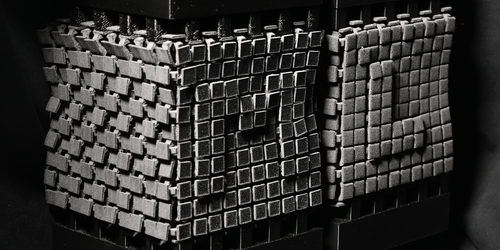Machine-Learning Tool Solves Metamaterial Jigsaw
Like Lego spaceships or jigsaw puzzles, mechanical metamaterials have properties that emerge from the physical interactions of a collection of building blocks. But unlike Legos and jigsaws, it can be tricky to predict whether a particular set of mechanical building blocks fits together to yield a stable structure. Now Ryan van Mastrigt of the University of Amsterdam and his colleagues demonstrate a machine-learning tool that can do just that [1]. Their tool learns from test structures which blocks squeeze snugly together and then uses that information to make predictions about other potential structures.
The team considered the arrangement of patterned, deformable tiles. These blocks can be rotated into one of four distinct orientations, with each taking on a different pattern if it is subsequently squeezed. The group studied structures made from different combinations of these pattens, using a machine-learning model to find out which ones were gapless and stable.
To train the neural network, van Mastrigt and colleagues started with tile arrangements known to produce both mechanically sound and mechanically unsound structures—including a stable, gapless structure that only appears for a few tile combinations. They fed random building-block arrangements to the neural network to see if it could identify which ones were gapless and mechanically viable. They also set the neural network to analyze the stability of structures in which one individual block was rotated. For all tests, they found that their tool could correctly identify stable structures.
Besides mechanical metamaterials, the team says that the neural network could be used to find functional structures for any system built from blocks, including proteins that fold and chemical compounds that have biological functions.
–Rachel Berkowitz
Rachel Berkowitz is a Corresponding Editor for Physics Magazine based in Vancouver, Canada.
References
- R. van Mastrigt et al., “Machine learning of implicit combinatorial rules in mechanical metamaterials,” Phys. Rev. Lett. 129, 198003 (2022).




